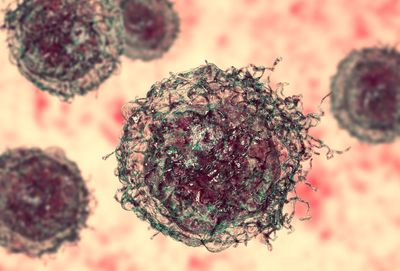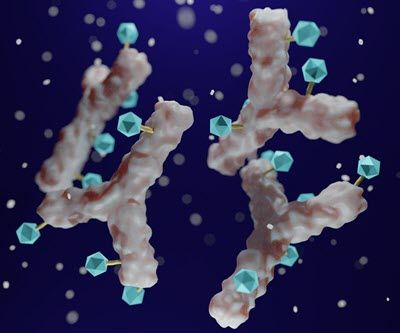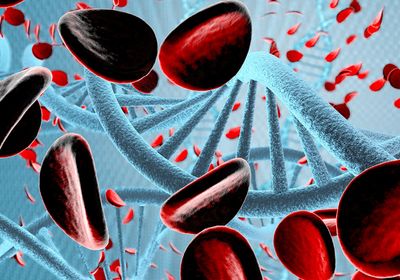ABOVE: © ISTOCK.COM, DR_MICROBE
Targeted radionuclide therapy, or TRT, focuses radiation on tumors, leaving healthy cells alone. Clinicians accomplish this by linking a radionuclide to a molecule that binds only certain cancer cell epitopes.
Unfortunately, many tumors lack these epitopes. Now, a study published March 13 in Advanced Healthcare Materials finds that anaerobic bacteria living inside many different types of tumors can act as a target for molecules called radionuclides that emit cell-killing energy, which could potentially allow TRT to be used against a much wider variety of cancers.
“Though effective, [TRT’s] expanded use is limited by the lack of tumor-specific targeting of the radionuclides,” writes cancer biologist Corey Speers at the University of Michigan in an email to The Scientist. “Though these are preliminary studies only in animal models, this treatment approach may limit off-target side effects and demonstrates promise that warrants further evaluation.”
Radiation therapy has historically been administered from the outside of the body inward, even though doing this damages healthy cells through which the radiation passes on the way to the tumor. Additionally, radiation therapy is unable to address systemic metastases. With TRT, however, radionuclides bind only to cancer cells, emitting killer doses of alpha and beta particles. TRT also allows visualization of the cancer cells via positron emission tomography (PET) and single photon emission computer tomography to monitor the outcome of the treatment.
However, TRT currently doesn’t work for many cancers: in some cases, that’s because the target tumor epitopes undergo endocytosis and aren’t available for binding, while in others, the tumor epitopes may be too similar to those on healthy human cells—or totally absent.
Scientists have known for years, however, that tumors house unique microbiomes of anaerobic bacteria. These microbes thrive in tumors because immune cells can’t reach them there and the oxygen level is low. Nalinikanth Kotagiri, a researcher at the University of Cincinnati, and his team recently engineered a certain type of bacteria to deliver anticancer “payloads” to such tumor cells (other groups have done similar work) and demonstrated in a separate study that these bacteria can be tracked via PET using a copper isotope-labeled compound called a siderophore. The siderophore, which was labeled with copper-64, accumulates in bacteria that express a certain receptor called the ferric YbT uptake receptor.
Kotagiri, along with postdoctoral fellow Nabil Siddiqui and their team thought that if they could switch the type of labeled compound from one that allowed for imaging of the bacteria to a radionuclide that actually killed the tumor, they might have a nifty new way to target currently unreachable tumors.
So, they first engineered a strain of E. coli to overexpress the receptor that the radionuclide binds to (the receptor also helps internalize the radionuclide). They then injected the engineered bacteria into mice and saw that they do indeed flourish in the tumors, with minimal accumulation in the rest of the body.
Next, they switched the probe to a different isotope of copper, copper-67, which is known to be beta-emitting and radiotherapeutic. They injected the engineered bacteria and then the new siderophore probe into two different mouse models of cancer: a colon cancer model and a breast cancer model, and compared its performance against injections of saline. For both cancer models, animals that received both the bacteria and the new siderophore lived significantly longer than those that received only saline, only the siderophore, or only bacteria.
“The bacteria acts as a tractor beam, and it attracts the siderophore attached to copper 67,” says Kotagiri, who has filed a provisional patent related to this work. The team also found increased anti-tumor CD8+ T cells and decreased anti-inflammatory Treg cells.
“You can put these bacteria as adapters inside whichever tumor it is; it doesn’t seem to matter. As long as they’re solid and have a hypoxic core, the bacteria will thrive there and serve as artificial receptors for these targeted radionuclides,” adds Kotagiri.
One possible side effect is that the radionuclide will accumulate in other tissues as well, though, because human cells don’t express the radionuclide receptor, the researchers say they hope this won’t be a problem. Kotagiri and his team plan to study how this technique affects cancer cell death mechanisms and immunological pathways.






